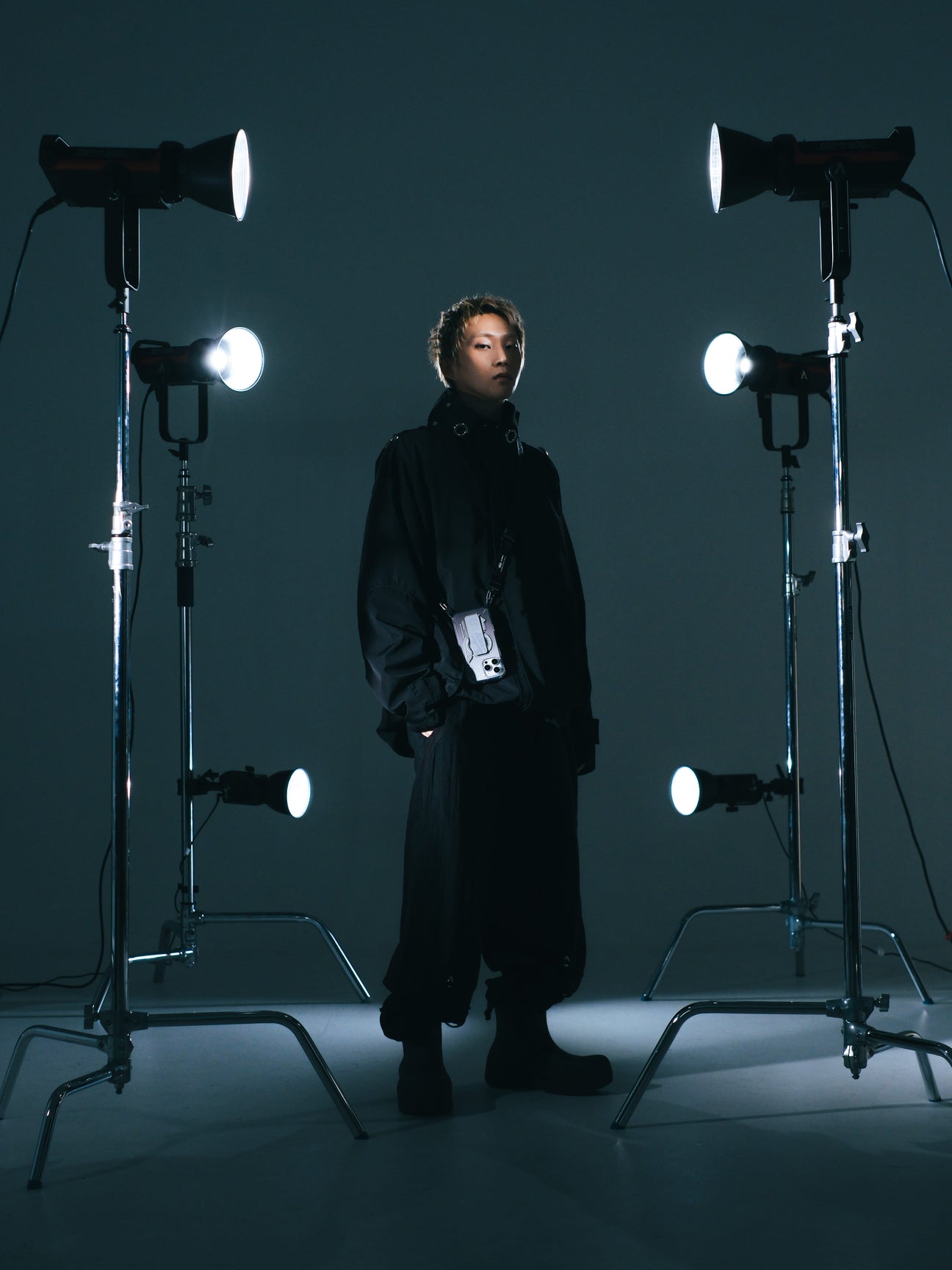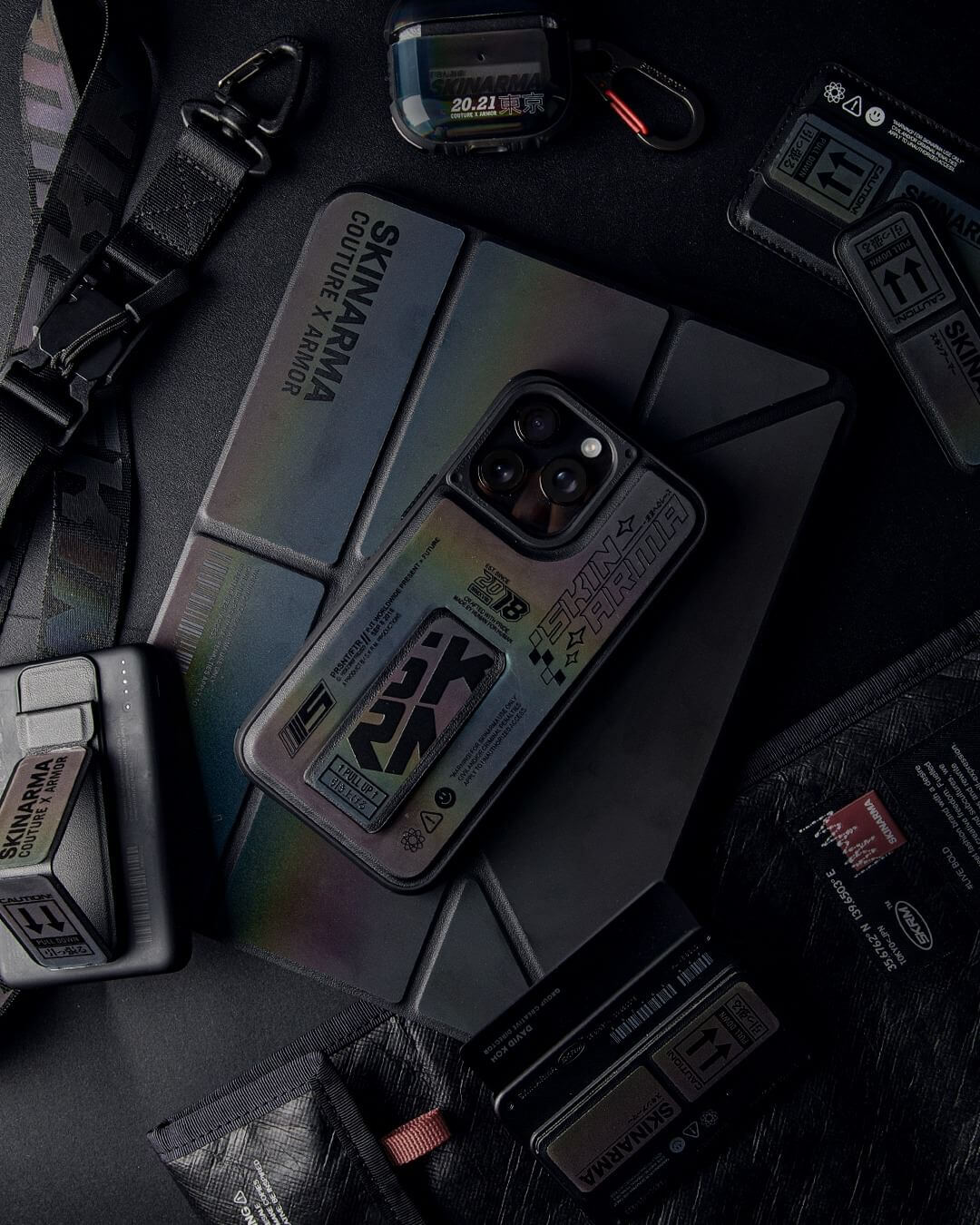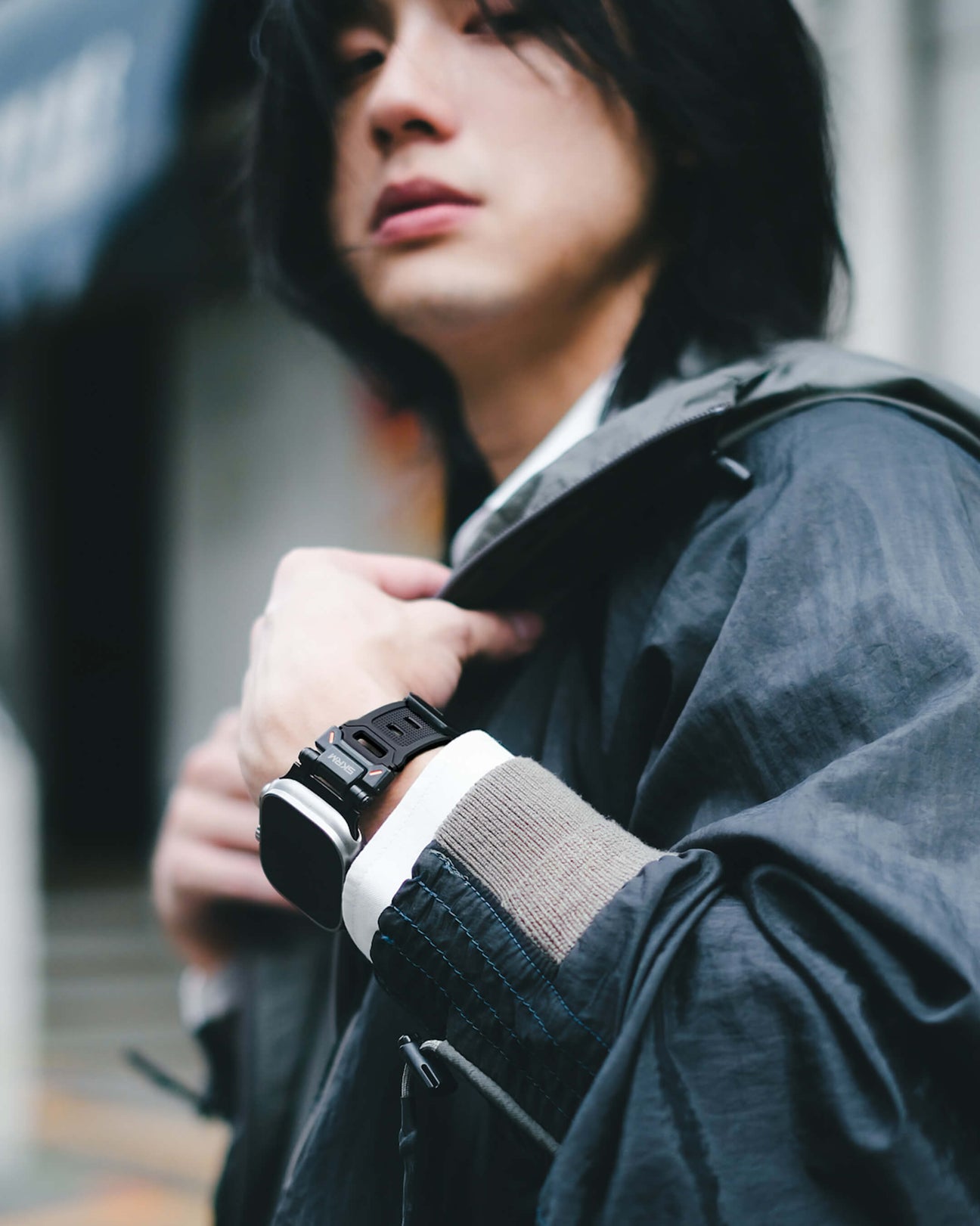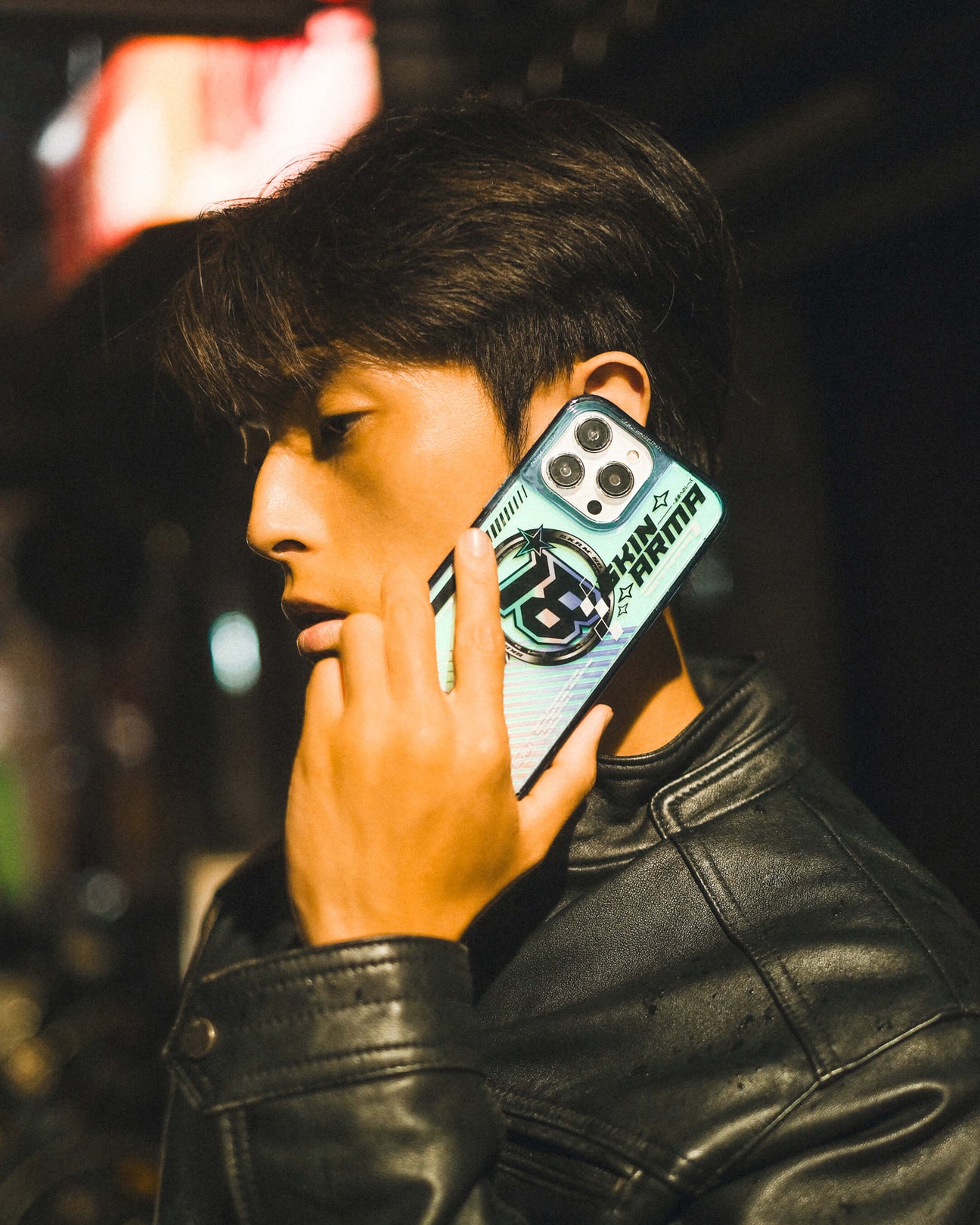Streetwear runs on scarcity, desirability, and the ability to flaunt what others don’t have. That formula didn’t start with Travis Scott collabs or limited sneaker drops. Instead, it started when someone carried a 20-pound JVC onto the subway in the 1970s, before a single word was said.
Every generation has its status object, and tech has always been the unspoken accessory that separated those who get it from those who don’t. You already know that your phone says something about you. What you might not know is that you’re participating in a tradition that connects back to break-dancers, hip-hop pioneers, and the original streetwear architects.
This quick dip reveals how devices became drip, why the iPhone matters in your aesthetic arsenal, and what the connection between technology and street culture means for how you build your personal brand today. Everything orbits back to this truth, and our community at SKINARMA exists in that gravitational center—designing cases and accessories that understand the weight of what you carry.
The Original Icon: The Boombox Era (1970s - 1980s)
Picture the Bronx in the late 70s. Before anyone streamed anything and before music fit in your pocket, the boombox was the entire party on your shoulder. These are 15 to 30 pounds of chrome-detailed machinery that demanded a dozen D batteries and cost real money.
JVC, Panasonic, Sharp were all competing to build the loudest model with the flashiest graphic equalizers that bounced with every beat. Carrying one of these monsters meant you controlled the vibe wherever you went. You brought the soundtrack to breakdancing battles. You owned the corner around the block. You turned subway cars into stages.
The boombox was never just a radio, though. It was a declaration that you had the resources and the audacity to claim public space as your own. Graffiti writers tagged while B-boys battled, and in the middle of all of it sat these massive machines pumping out the bass that defined hip-hop’s birth. This was tech as status symbol in its purest form.
Loud, unapologetic, and impossible to ignore.
The Personal Revolution: Walkman and Early Portables (1980s - 1990s)
Then Sony changed the entire game in 1979 with something that seemed almost contradictory: private music. The Walkman flipped the script on what tech could mean in street culture. Suddenly you weren’t sharing your soundtrack with the whole block. You were moving through the world with your own frequency, your own pizzazz that nobody else could access.
That original TPS-L2 model wasn’t cheap. At around $150, you were essentially dropping over $600 in today’s money. But that’s exactly what made it matter. By the mid-80s, everyone from subway commuters to skaters had Walkmans clipped to their belts or tucked into jacket pockets, headphones draped around necks even when the tape wasn’t playing (interestingly, that’s how we carry our AirPods now, with the help of a carabiner or lanyard).
The device created its own aesthetic language. Your cassette collection became a portable library of taste, while the way you walked while listening became its own form of style. On the tracks, athletes warmed up with Walkmans, and in bedrooms, teenagers used them to create separation from parents and authority. You were suddenly allowed to exist in your own world while moving through everyone else’s.
When Discmans showed up in the 90s, they offered CD quality for those willing to deal with the bulk and the skip protection issues. But the principle stayed the same. Streetwear brands caught on fast, designing pants with designated pockets and jackets with internal sleeves built specifically to hold these devices while you moved. And so, your portable became armor against a world that demanded your attention.
From Brick to Bling: Cell Phones and Sidekicks (Early 2000s)
Fast forward to 2004. The Motorola Razr dropped and suddenly phones weren’t just chunky necessities that business people carried. You’ve got on hand an aerospace-grade aluminum body with a satisfying flip mechanism. Finally, a cell phone you actually wanted to be seen with. The Razr made phones covetable in a way nothing had before.
But the real shift came with the T-Mobile Sidekick in 2002. Paris Hilton had one. Lindsay Lohan had one. Every rapper who mattered was getting photographed with their Sidekick, using that swivel screen and QWERTY keyboard to pioneer what would become social media culture. The device came in colors. You could customize it with cases or even bling it up. This was the first phone that genuinely felt like a fashion accessory.
Meanwhile, the Nextel with its distinctive chirp became essential street equipment. That instant communication felt more immediate than regular calls, somehow more urgent. Your phone number became social currency. The device itself proved you were somebody worth reaching.
People started adding phone charms and downloading custom ringtones. Bedazzling really became a thing at this juncture. Your phone doubles as a personalized statement, and having the right model meant you were connected and relevant. This was the moment when carrying tech transitioned from practical to aspirational, which set up everything that came next.
Touchscreen Takeover: Smartphones Go Global (2007 - Now)

Steve Jobs walked on stage in January 2007 and eliminated every button that didn’t need to exist. The original iPhone wasn’t technically the first smartphone, but it was the first one that made people line up around blocks like they were waiting for Jordans. That glass screen, the pinch-to-zoom gesture, the idea that your phone could be a million different things depending on which apps you downloaded—it created an entirely new category of essential object.
Then Instagram launched in 2010 and your handheld became your ticket to influence. Android devices came in and democratized the whole revolution, too. But regardless of which ecosystem you chose, your phone started dictating your entire existence.
Today the same device (theoretically, anyway) shoots magazine-quality photos, replaces your wallet, and serves as the primary tool for building a personal brand that can generate actual income. The technology caught up to what street culture always knew: the device you carry defines how you move through the world.
Likes, Links and Limited Drops
Social media rewired the entire operating system, turning your phone into mission control for an economy built on speed and visibility.
Instagram transformed fit pics into career launchers and raffles moved from in-store clipboards to app-based systems that determined whether you ate or took an L. Drop culture accelerated to match smartphone speeds with brands announcing surprise launches via push notifications while resale platforms like StockX and GOAT turned phones into trading floors where profits depended on how fast you could move. Your engagement metrics became as important as your actual style, and the phone documenting your fit started mattering almost as much as the fit itself.
Can you even imagine going back?
iPhone 17 and the Current Moment

Apple’s iPhone 17 fleet continues pushing boundaries while cementing its role as the ultimate streetwear accessory. The photography capabilities make everyone’s content look professional. Performance keeps you competitive when seconds separate securing a piece from missing out entirely. But the real relevance runs deeper than specs. Pulling out the latest iPhone signals you’re invested in staying ahead and understanding how tools shape outcomes. It joins a lineage of tech that’s always separated culture leaders from followers.
What’s Next?
Wearable tech is moving beyond smartwatches into territory that redefines interaction entirely, with AR glasses evolving from clunky prototypes into sleek accessories major brands are developing behind closed doors. The next wave won’t be about carrying tech but wearing it seamlessly through devices that blend into jewelry, eyewear, and clothing while AI integration personalizes everything from shopping to content creation. Phones will get thinner (👋🏻 iPhone Air) and more camera-focused as sustainability becomes non-negotiable for younger generations demanding transparency about materials and production.
Whatever comes next will follow the same five-decade pattern: tech offering utility wrapped in aspiration, tools becoming trophies, innovations separating early adopters from everyone else playing catch-up. Just watch.
SKINARMA’s Mark on Streetwear

We entered the conversation understanding something fundamental: protecting your tech is protecting your investment, your brand, and your ability to stay relevant in a culture that moves at digital speed. Our cases and accessories bridge the gap between military-grade protection and legitimate streetwear credibility.
We don’t want you to hide your device. So, we’ve set out to create armor that enhances it, using materials and designs that respect both function and aesthetics. The attention to detail matches the care you put into every other element of your fit. The community we’ve built recognizes that your phone deserves the same consideration as your kicks, your outerwear, and every other piece that defines how you move through the world.
Designed for the Future, Available Today

Five decades of street culture prove the same truth over and over: the devices you carry define how seriously people take you. Your tech is your toolkit, your status symbol, and your connection to everything that matters. Protecting it properly isn’t optional anymore.
Browse SKINARMA’s full collection of apparel and accessories built for people who understand that every detail counts. Your phone earned its place in your rotation through decades of evolution. Now, give it the protection it deserves.
Culture leaders move first. Join our loyalty program to rack up points, claim rewards, and secure early access to drops.






